CGI / Perl Cookbook
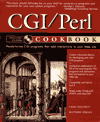
Published 1998
[ Assisted author Craig Patchett. ] While at CTSnet, I had the opportunity to assist other writers, such as Craig Patchett. Craig kindly thanked me with this personalized inscription and acknowledgment: “Morgan Davis at CTSNET was generous enough to offer a free account for the development of the book’s programs in addition to answering a wide array of technical questions … deserving not only our gratitude but a hearty endorsement if you’re looking for a service provider.”
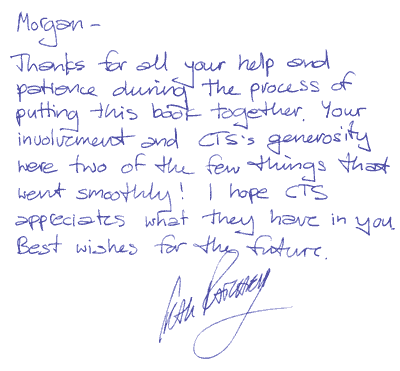
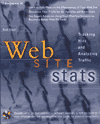
Published 1997
[ Technical Editor for author Rick Stout. ] After finishing the Internet Yellow Pages book with Rick, we teamed up again, only this time I took the role as tech editor for this excellent book. Rick shows how to squeeze valuable information from web server logs so you can learn about visitor traffic and tune your site effectively. It subsequently became the focus of a magazine article in which I was interviewed for a side-bar column in NetGuide Magazine.
MouseTalk
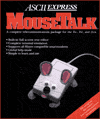
Published 1987
[ Technical Editor / Programmer. ] I did more programming than writing for the updated MouseTalk manual, and offered plenty of literary tech support. MouseTalk, from United Software Industries, Inc., was a user-friendly terminal program for the Apple II series. It employed mouse technology with unique on-screen pull down menus and dialog boxes. Although it was the easiest modem application at the time, it was built on the powerful ASCII Express Pro framework, creating a robust telecommunications tool for its day.
ASCII Express Pro for MS-DOS
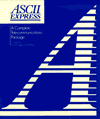
Published 1984
[ Technical Writer / Product Tester. ] Writing and editing portions of the ASCII Express Pro for MS-DOS manual was my first opportunity to work with Bill Blue and United Software Industries. To help document his next terminal program, Bill enlisted enthusiastic members of his bulletin board system who knew modem communications well and could write. Among us were Ryan Gale, Irwin Hom, and Joe Holt (who also was one of the programmers). We worked out of Bill’s converted garage on a Compaq Portable (which was more luggable than portable).
CompuSoft Publishing

Technical Researcher and Writer
I joined CompuSoft Publishing as a technical researcher and writer directly out of high school — my official entry into a career in computers. It was a tremendous experience that gave me exposure to many different types of personal computers: TRS-80 series, Timex Sinclair, Kaypro, Osborne, Apple II, Macintosh, IBM PC, and all their operating systems, including XENIX.
CompuSoft’s prime focus was adapting a successful manuscript on learning BASIC programming for various computers. The original BASIC book was written by Dr. David A. Lien, a microcomputer industry pioneer and best-selling technical author. Lien’s friendly style makes learning BASIC fast and fun. Several books are illustrated with hilarious cartoons by renowned aviation cartoonist, Bob Stevens.
Along the way, I introduced online BBS pal, Dan Gookin, to CompuSoft. That initiated his extremely successful career in writing, and our subsequent Apple IIGS book collaborations.
In addition to working with a great group of people, the most valuable aspect was understanding and appreciating the superbly unique, non-threatening writing style of Dr. Lien. Below are just some of the CompuSoft titles I had the privilege to work on.
The BASIC Handbook

Published 1986
[ Technical researcher and writer. ] The quintessential BASIC encyclopedia. Every BASIC command, function, and operator, in every dialect known, was included. Unlike other CompuSoft books that doted on the beginning programmer, the BASIC Handbook was a no-nonsense, to-the-point affair weighing in at nearly 900 pages. The first edition was published in 1978. I worked on the third and last edition.
Learning BASIC for the Macintosh
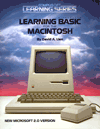
Published 1985
[ Technical researcher and writer. ] In 1984, we had one of the first Macintoshes (an original, 128K Mac) before they were available to the public. Because of my Apple II background, I was selected to research this rendition of the BASIC manuscript. Microsoft BASIC 2.0 on the Mac was so different than anything before it, the book literally required a complete rewrite. I did my best to manufacture prose in the witty Lien style, an exercise that gave me confidence to write on my own.
Learning Apple II BASIC
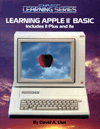
Published 1984
[ Technical researcher and writer. ] This is the book I really wanted to do because I knew Applesoft BASIC quite well. Although not as radical as the Mac, the Apple II was a big departure from the TRS-80 upon which the original manuscript was based. As a result, much rewriting and new text was needed. There’s even a chapter on loading and saving programs to cassette tape! Gads.
Learning IBM BASIC
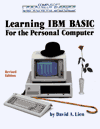
Published 1984
The original IBM PC was the great, great grand daddy of most of the computers in use today. In 1984, we knew that IBM’s initial foray into the world of personal computers was a significant leap and would bring BASIC to a wider audience. This book covered “BASICA” for the PC and its diminutive and unsuccessful counterpart, the funky IBM PCjr. If you remember the PCjr, with its chiclet keyboard, you’re an old timer or have an exceptionally good memory.
Learning TRS-80 Model 4/4P BASIC
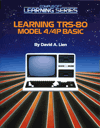
Published 1984
[ Technical researcher and writer. ] This book was my first solo research project. The TRS-80 Model 4/4P was an upgrade to the Model III. I really couldn’t stand the TRS-80 Model III on which we wrote all of our manuscripts in a program called Scripsit. The floppy drives were frustratingly temperamental, and we were constantly hauling them to the Radio Shack Computer Center for repair. The tech there was a chain-smoker, and the machines always came back smelling like an ashtray. No wonder the drives went kaput so often.
